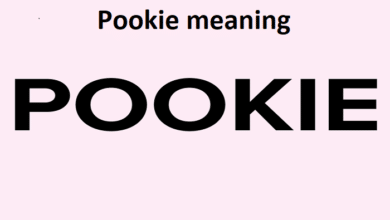Waver Flag: The Ultimate Guide to its History, Use, and Cultural Significance

Introduction
Flags have long been a symbol of identity, pride, and communication across cultures and time. Among these, the waver flag holds a special place, especially in the context of sports, protests, celebrations, and various public events. This blog post delves deep into the fascinating world of waver flags, exploring their history, significance, types, and much more. Whether you are a sports fan, a participant in social movements, or just curious about this vibrant element of public life, this comprehensive guide will provide you with all the insights you need.
The History of Waver Flags
Waver flags have a rich history that dates back centuries. The concept of using flags to communicate and symbolize certain messages can be traced back to ancient civilizations. In maritime history, flags were essential for communication between ships. Over time, the use of flags evolved, and waver flags became a popular way to express enthusiasm and support in various contexts.
Ancient Uses
Ancient civilizations such as the Romans and Greeks used flags for signaling in warfare. These flags were essential tools for conveying messages over long distances. The use of vibrant colors and distinct patterns helped in identifying different factions and communicating strategies during battles.
Evolution Over Time
As societies evolved, so did the use of flags. The medieval period saw the rise of heraldic flags, which represented noble families and were used in tournaments and battles. With the advent of nation-states, flags began to symbolize national identity and pride. The waver flag, specifically, became prominent in public gatherings and events, signifying collective enthusiasm and solidarity.
The Symbolism of Waver Flags
Waver flags are not just pieces of fabric; they are imbued with deep symbolism. The colors, patterns, and designs all convey specific meanings and emotions. Understanding the symbolism behind waver flags can enhance our appreciation of their significance.
Colors and Their Meanings
Different colors in waver flags often represent various emotions and ideas. For example:
- Red: Passion, energy, and courage.
- Blue: Peace, tranquility, and loyalty.
- Green: Growth, harmony, and renewal.
- Yellow: Happiness, optimism, and warmth.
Patterns and Symbols
The patterns and symbols on waver flags can convey specific messages. Stripes, stars, and crosses are common elements that have distinct meanings. For instance, stars often symbolize unity and aspiration, while stripes can represent the journey or progression.
Waver Flags in Sports
One of the most prominent arenas where waver flags are used is in sports. From football matches to the Olympics, waver flags play a crucial role in enhancing the spectator experience and building a sense of community.
Football (Soccer)
In football, waver flags are ubiquitous. Fans wave flags to show their support for their teams, creating a sea of colors in the stadiums. These flags are often emblazoned with the team’s logo, colors, and slogans, making them a powerful symbol of fan identity.
Olympics
During the Olympics, athletes and spectators alike use waver flags to represent their countries. The opening and closing ceremonies are particularly notable for their vibrant displays of national flags, symbolizing international unity and competition.
Waver Flags in Protests and Social Movements
Waver flags have also been instrumental in protests and social movements. They serve as powerful symbols of resistance, solidarity, and the desire for change.
Historical Protests
Throughout history, waver flags have been used in various protests. For example, during the civil rights movement in the United States, flags bearing slogans and symbols of equality were waved by activists to demand justice and civil rights.
Modern Movements
In recent times, movements like Black Lives Matter and climate change protests have seen the extensive use of waver flags. These flags often carry powerful messages and imagery, making them a focal point of the demonstrations.
Types of Waver Flags
Waver flags come in various types, each suited for different occasions and purposes. Understanding these types can help in choosing the right flag for any event.
Handheld Flags
Handheld flags are small and portable, making them ideal for individuals to wave at events. They are commonly used in sports events, parades, and protests.
Banner Flags
Banner flags are larger and often carried by multiple people or displayed on poles. They are used in parades, large gatherings, and public demonstrations.
Pennant Flags
Pennant flags are triangular in shape and are often used in sports events and school functions. They are great for adding a festive atmosphere to any event.
Materials and Design
The material and design of a waver flag significantly affect its durability and visual appeal. Let’s explore the common materials and design considerations for waver flags.
Common Materials
Waver flags are typically made from materials like polyester, nylon, and cotton. Polyester is popular for its durability and vibrant color retention. Nylon is lightweight and quick-drying, making it suitable for outdoor use. Cotton, while less durable, has a traditional look and feel.
Design Considerations
When designing a waver flag, it’s essential to consider factors like color fastness, wind resistance, and ease of handling. The design should also be visually striking and convey the intended message effectively.
The Psychology Behind Waver Flags
Waver flags have a unique ability to evoke emotions and influence behavior. Understanding the psychology behind waver flags can shed light on their powerful impact.
Emotional Impact
Waver flags can evoke a range of emotions, from excitement and joy to solidarity and defiance. The act of waving a flag can create a sense of participation and belonging among individuals.
Group Dynamics
In group settings, waver flags can enhance the sense of unity and collective identity. They serve as visual markers that bring people together, reinforcing a shared purpose and goal.
Waver Flags in Celebrations and Festivals
Waver flags are a common sight in celebrations and festivals around the world. They add color and vibrancy to the festivities, enhancing the overall experience.
National Holidays
During national holidays, waver flags are prominently displayed to celebrate the country’s heritage and achievements. Independence Day, for instance, sees a widespread display of national flags.
Cultural Festivals
Cultural festivals often feature waver flags that represent the traditions and customs of a community. These flags add to the festive atmosphere and celebrate cultural diversity.
How to Choose the Right Waver Flag
Choosing the right waver flag depends on the occasion, purpose, and personal preferences. Here are some tips to help you make the right choice.
Consider the Occasion
The occasion plays a significant role in determining the type of waver flag you need. For sports events, team colors and logos are essential. For protests, the message and symbolism are crucial.
Material and Size
Consider the material and size of the flag based on where and how it will be used. For outdoor events, durable materials like polyester and nylon are recommended. The size should be manageable and appropriate for the setting.
Caring for Your Waver Flag
Proper care and maintenance can prolong the life of your waver flag. Here are some tips to keep your flag in good condition.
Cleaning
Regular cleaning is essential to maintain the vibrant colors of your waver flag. Most flags can be hand-washed or machine-washed on a gentle cycle. Avoid using harsh detergents that can damage the fabric.
Storage
When not in use, store your waver flag in a cool, dry place. Avoid folding the flag too tightly, as this can cause creases and damage the fabric. Use a flag storage case if possible.
The Future of Waver Flags
As we look to the future, waver flags will continue to play a significant role in various aspects of public life. Advancements in materials and printing technology will likely enhance the durability and visual appeal of waver flags.
Technological Innovations
New materials that are more durable and environmentally friendly are being developed. Additionally, digital printing technology allows for more intricate and vibrant designs.
Cultural Relevance
Waver flags will remain culturally relevant as symbols of identity, pride, and solidarity. Their ability to convey powerful messages will ensure their continued use in sports, protests, and celebrations.
Conclusion
Waver flags are more than just pieces of fabric; they are powerful symbols of identity, pride, and communication. From ancient battlefields to modern sports arenas and social movements, waver flags have played a significant role in shaping our collective experiences. Understanding their history, symbolism, and various uses can enhance our appreciation of these vibrant elements of public life. As we move forward, waver flags will continue to inspire and unite people around the world.
FAQs
1. What is a waver flag?
A waver flag is a type of flag designed to be waved by individuals or groups to show support, enthusiasm, or solidarity during events such as sports matches, protests, celebrations, and parades.
2. What materials are commonly used for waver flags?
Waver flags are typically made from materials like polyester, nylon, and cotton. Polyester is known for its durability and vibrant colors, nylon is lightweight and quick-drying, and cotton offers a traditional look.
3. How can I choose the right waver flag for an event?
Consider the occasion, purpose, and setting when choosing a waver flag. For sports events, opt for team colors and logos. For protests, focus on the message and symbolism. The material and size should be suitable for the environment and intended use.
4. How should I care for my waver flag?
Regular cleaning and proper storage are essential for maintaining your waver flag. Hand-wash or machine-wash on a gentle cycle with mild detergents. Store in a cool, dry place and avoid folding tightly to prevent creases.
5. Are there any technological advancements in waver flags?
Yes, advancements in materials and digital printing technology are enhancing the durability and visual appeal of waver flags. New, environmentally friendly materials and intricate, vibrant designs are becoming more common.





